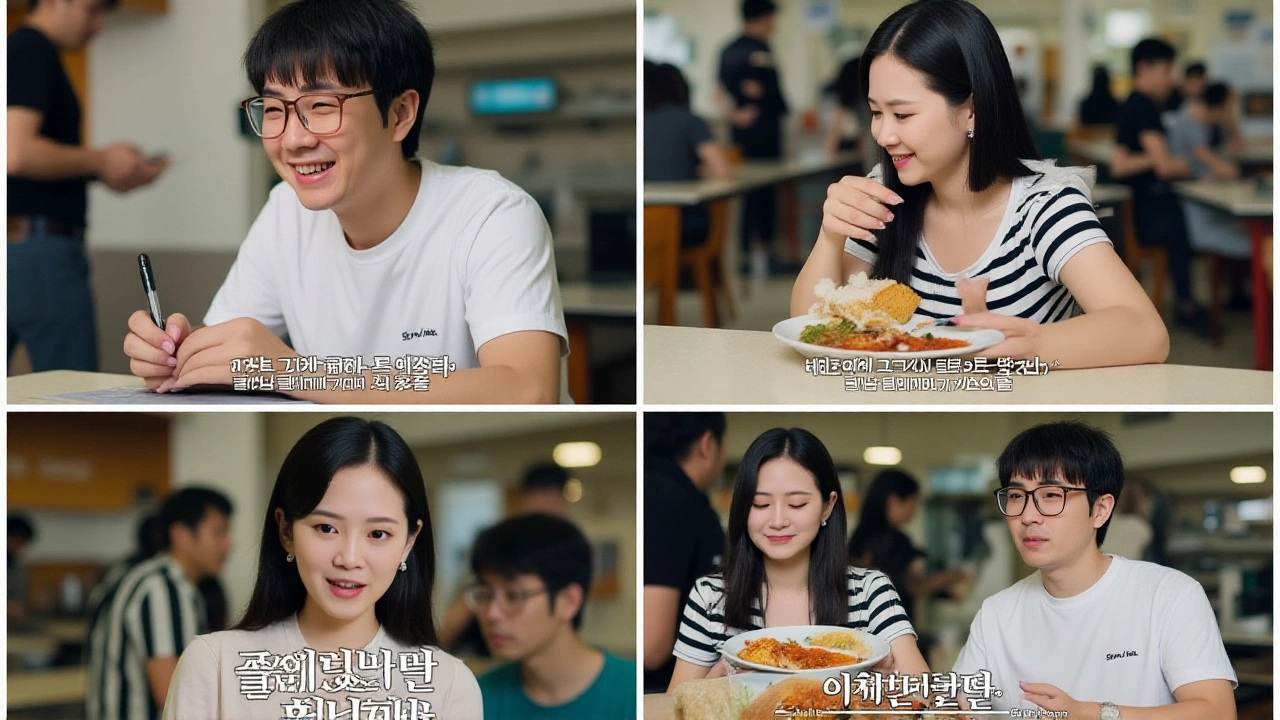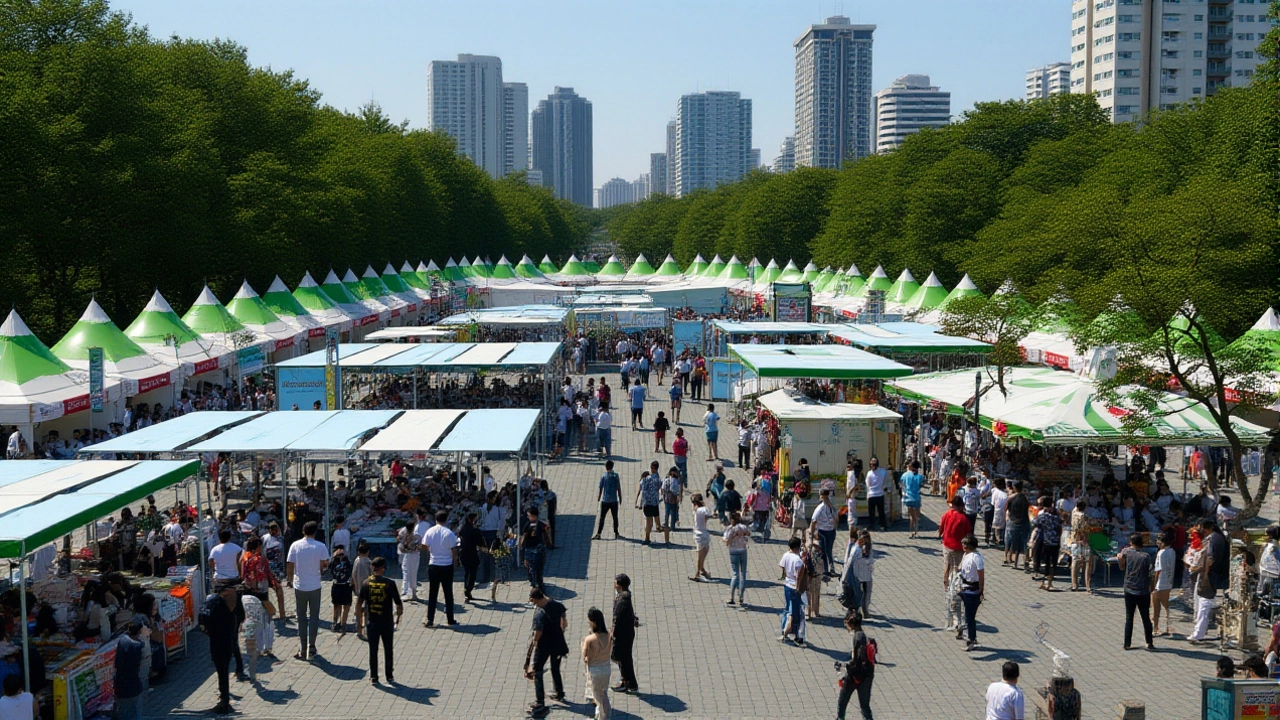When Buk-gu District Office, the local government body overseeing Daegu’s Buk‑gu ward, teamed up with Sinjeon Tteokbokki to launch the annual Tteokbokki Festival, the city of Daegu turned its downtown park into a fiery showcase of Korea’s most beloved street food.
The three‑day celebration unfolds each May at DGB Daegu Bank Park, a sprawling venue in Buk‑gu that can host tens of thousands of visitors. According to the district’s Cultural and Arts Section, the event brings together the nation’s top tteokbokki restaurants, stage performances, DJ parties, and hands‑on cooking labs. The festival’s impact is underscored by a cumulative attendance of 240,000 across its first four editions and a coveted Pinnacle Award from the International Festivals & Events Association, often dubbed the "Festival Olympic."
Historical Context and the Rise of a Food‑Tourism Hub
Daegu’s love affair with tteokbokki dates back to the post‑Korean War era, when street vendors cooked the spicy rice cakes in makeshift stalls to feed a recovering population. Over the decades the dish evolved from a modest snack into a culinary export, thanks in large part to the aggressive branding of Sinjeon Tteokbokki. The brand’s headquarters sit in Buk‑gu, and its flagship Sinjeon Museum – located at 43 Gwaneum‑ro – functions as a corporate showcase and cultural center.
In 2019, the municipality officially christened Buk‑gu the "Holy Land of Tteokbokki," a moniker that helped secure funding for the inaugural festival. The move was strategic: by clustering food, culture, and entertainment, Daegu positioned itself as a must‑visit stop on South Korea’s emerging culinary‑tourism trail.
Festival Logistics: When, Where, and What
The most recent edition ran from May 4‑5, 2023, according to local reports from MK News. Some online calendars mistakenly listed June 17‑18, but the district’s official website confirms the May dates as the standard schedule. The three‑day format typically breaks down as follows:
- Day 1 – Opening ceremony, live K‑pop covers, and the first wave of restaurant booths.
- Day 2 – DJ dance parties, cooking competitions, and a “Tteokbokki World Record” attempt.
- Day 3 – Family‑focused workshops, a finale fireworks display, and a closing speech by the Buk‑gu mayor.
Transportation is straightforward: visitors can hop on bus routes 719, 937, or 939 to Chilgok IC, or use routes 724, 750 for direct access to the park. On‑site parking accommodates 150 cars, with five designated disabled spots.
Inside the Sinjeon Museum: More Than a PR Hall
Beyond the festival grounds, the Sinjeon Museum offers three signature experiences. In the "My Cup Tteokbokgi Factory," guests design their own cup‑topped tteokbokki, watching robotic arms seal the containers – a perfect blend of tradition and high tech. "Glass Will" simulates a sterile condiment‑manufacturing environment, letting visitors glimpse the hygiene standards that give Sinjeon its international reputation. Finally, the "Sinjeon Mill" area serves up free samples, letting tourists taste the brand’s signature sauce straight from the source.
The museum operates Wednesday through Sunday, 10:00 a.m.–5:30 p.m., with a lunch break from 12:00 p.m.–1:00 p.m. Admission is free, though some workshops require prior reservation via the museum’s hotline (053‑321‑6339).

Economic and Cultural Impact: Numbers That Matter
Local businesses report an average sales boost of 35 percent during the festival weekend, according to a survey conducted by the Daegu Chamber of Commerce. Hotels in the vicinity report near‑full occupancy, and the city’s tax revenue from food‑related sales jumped by roughly ₩1.2 billion (about $950,000) in the 2023 edition.
From a cultural standpoint, the festival has helped solidify Daegu’s identity as a food‑forward city. Younger Koreans, who once gravitated toward Seoul’s nightlife, now travel to Buk‑gu for the “spicy pilgrimage.” International visitors – primarily from Japan, the United States, and Southeast Asia – cite the festival as a top reason for their trip, according to tourism board data released in August 2023.
Future Outlook: Scaling Up Without Losing Flavor
Organizers aim to expand the festival to a full week by 2026, adding regional “tasting tours” that showcase other Daegu specialties like kalguksu and makgeolli. However, they remain cautious about over‑commercialization. As the Cultural and Arts Section head, Lee Min‑soo, told reporters, “We want the festival to stay true to the community that birthed tteokbokki. Growth is good, but the soul of the event is the shared love for the dish.”
Watch this space: the district is already negotiating with a major streaming platform to broadcast live cooking demos, a move that could turn Daegu’s streets into a global digital stage.
Frequently Asked Questions
When does the Tteokbokki Festival usually take place?
The festival traditionally runs for three days in early May. The 2023 edition was held May 4‑5, and organizers plan to keep the May schedule for future events.
How can visitors get to DGB Daegu Bank Park?
Bus routes 719, 937, and 939 drop passengers at Chilgok IC, while routes 724 and 750 provide a more direct stop. The park also offers a 150‑car parking lot with five disabled‑parking spaces.
What can I do at the Sinjeon Museum?
The museum hosts three interactive zones: the My Cup Tteokbokgi Factory where you make your own cup‑tteokbokki, the Glass Will hygiene demo, and the Sinjeon Mill tasting area. All are free, though some workshops need prior booking.
Why does the festival matter to Daegu’s economy?
In 2023, the event generated roughly ₩1.2 billion in extra tax revenue, boosted local restaurant sales by 35 percent, and filled hotels to near capacity, underscoring its role as a key driver of food tourism.
Who is behind the organization of the festival?
The Cultural and Arts Section of the Buk‑gu District Office plans and runs the festival, working closely with Sinjeon Tteokbokki and local businesses.
